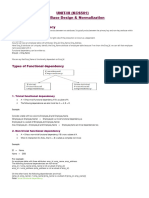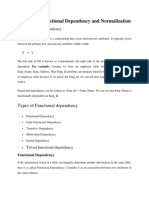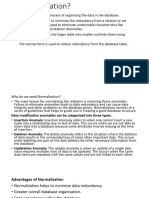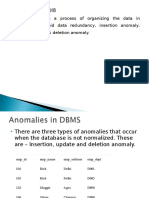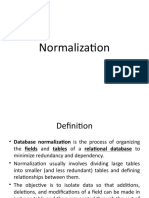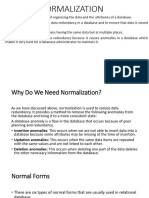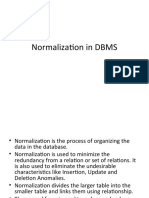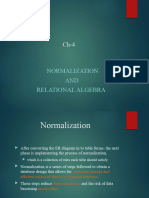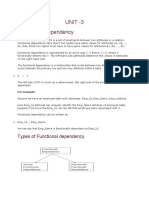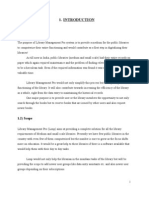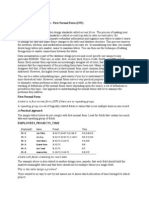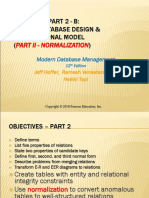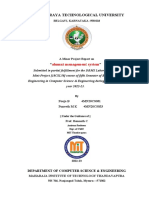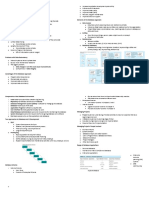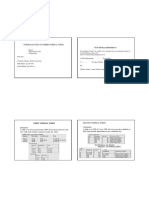0% found this document useful (0 votes)
31 views24 pagesDBMS Module 3
The document discusses database anomalies that can occur due to poor data management. It describes insertion, deletion, and update anomalies and how normalization addresses these issues by reducing data redundancy. The document also covers functional dependencies, normal forms including 1NF and 2NF, and provides examples to illustrate database concepts.
Uploaded by
deepaksrkattangalCopyright
© © All Rights Reserved
We take content rights seriously. If you suspect this is your content, claim it here.
Available Formats
Download as PDF, TXT or read online on Scribd
0% found this document useful (0 votes)
31 views24 pagesDBMS Module 3
The document discusses database anomalies that can occur due to poor data management. It describes insertion, deletion, and update anomalies and how normalization addresses these issues by reducing data redundancy. The document also covers functional dependencies, normal forms including 1NF and 2NF, and provides examples to illustrate database concepts.
Uploaded by
deepaksrkattangalCopyright
© © All Rights Reserved
We take content rights seriously. If you suspect this is your content, claim it here.
Available Formats
Download as PDF, TXT or read online on Scribd
/ 24



